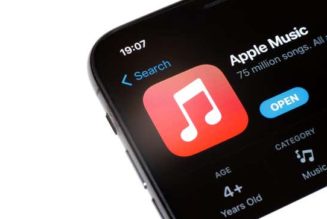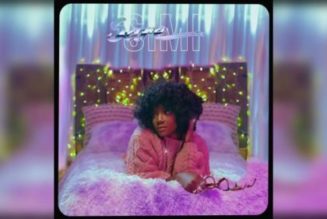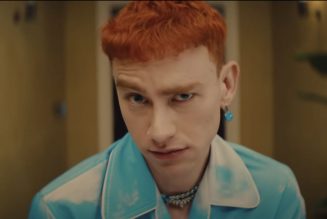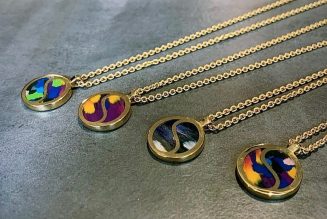
Heavy Consequence contributor Greg Prato is the author of several rock books, including 2009’s Grunge Is Dead: The Oral History of Seattle Rock Music. Here, Prato looks back at Nirvana’s groundbreaking 1991 album Nevermind on its 30th anniversary, sharing quotes from his aforementioned book.
Few albums have played a major role in changing the direction of rock music. Not only did Nirvana’s Nevermind do just that, it also started a cultural revolution.
Upon the release of Nevermind on September 24th, 1991, it seemed like almost immediately, hair metal was pronounced dead, as radio and MTV suddenly embraced likeminded bands hailing from the Seattle area. Beyond the music, young people began adopting “grunge fashion,” while also embracing the more progressive and introspective thinking from this new wave of bands.
And the change occurred largely because of singer-guitarist Kurt Cobain’s songwriting, who captivated the world with Nevermind‘s first single, “Smells Like Teen Spirit.” From there, hits like “Come As You Are” and “Lithium” also connected with millions of fans, and a complete listen revealed the entire album to be a tour de force from front to back.
Interestingly, quite a few of the tunes on Nevermind — particularly “In Bloom,” “Lithium,” “Polly,” and “Breed” — were worked out with drummer, Chad Channing, who played on Nirvana’s 1989 debut album, Bleach. When Channing’s replacement, Dave Grohl joined the band in 1990, Nirvana (who also included bassist Krist Novoselic) opted to have Grohl re-record most of those drum parts. “Overall, all the parts were the same,” recalled Channing. “In fact, when I heard that, I was like, ‘Wow.’ I was flattered that they kept my stuff, the things that I had done. Kind of the greatest compliment I’d ever received. For instance, ‘In Bloom’ — I had the single kick drum thing going on for the main verses, and then Dave added an extra one. But the majority of that stuff is all pretty much the same.”
After an April 1990 session at Smart Studios in Madison, Wisconsin, Nevermind was mostly recorded at Sound City in Van Nuys, California, in May and June of 1991. Quite a few of the Seattle-area bands were able to hear the Nevermind material prior to its official release, and had immediate opinions. “I already loved Bleach,” said Soundgarden guitarist Kim Thayil. “Many of those songs are my favorite songs ever — of any rock band. I was really looking forward to hearing Nevermind with great anticipation. ‘Smells Like Teen Spirit’ stuck out immediately. I remember they sent us a demo, and [Soundgarden bassist] Ben [Shepherd] really liked it — he started laughing, pointed at the boom box, and said, ‘That’s their f**king hit!’ It sounded pretty produced — it was definitely a very ‘wet’ record. A lot of reverbs and delays — whereas Bleach seemed punchy and dry. I know people like to think of Nevermind as being all punk rock and raw. Anyone who doubts that should put their headphones on and listen to it — it’s a very wet, slick, polished record.”
Mudhoney’s Steve Turner also voiced similar concerns about the way producer Butch Vig had captured Nirvana’s sound in the studio. “I thought that they had overproduced it. I heard the demos they’d done with Chad on drums — some of the same songs, and I thought it was great. I was a bit disappointed with the sound of Nevermind. It sounds like a really big, almost ’80s hard rock record, the sheen that’s on it.”
But the album immediately connected with others, including Alice in Chains’ Jerry Cantrell: “I thought it was amazing. It was a serious step up from the record before. It was like three or four steps up.” Also, Guns N’ Roses’ Duff McKagan (originally from Seattle) immediately recognized the album’s greatness. “Nevermind was kick-ass. I had one cassette copy of it before it came out, and my girlfriend and I kept stealing it out of each other’s car — we wore it out. It was a really loud, well-produced, punk rock record. With something extra — a great drummer. Nirvana was straight up, they had three-minute rock songs that were perfect.”
Another renowned musician who was also taken by Nevermind was Eddie Vedder, whose band Pearl Jam had just released their soon-to-be-classic album, Ten, roughly one month earlier. “There was something about those songs — not only was there an immediate connection, but you didn’t get sick of them. It was an incredible bit of playing, songwriting, and focus of energy — having it seem natural. And where they were coming from, and what he wanted to say — even though you didn’t [know] what he was saying.”
Vedder continued, “We drove out to the Mojave Desert to see Fugazi — free show in the middle of the desert. You get there and there’s a van, two work lights set up, they’re playing in the sand amongst these dunes. It was quite a drive out there, and I think we listened to [Nevermind] all the way there and back. All that was on our minds was Fugazi, but then we would listen to this music. It was like getting doused and lighting yourself on fire — in some kind of celebration.”
That all said, just about everyone was caught off guard by the immediate and massive success of Nevermind — as it seemed like as soon as it was released, you could not escape seeing and hearing the band on MTV (thanks to “Smells Like Teen Spirit,” which would eventually peak at an impressive No. 6 on the Billboard Hot 100) or spotting them on countless magazine covers (including the April 16th, 1992 issue of Rolling Stone).
According to Nirvana sound engineer Craig Montgomery, it was when the band set out for a run of US dates that it became clear how big the band had gotten. “When Nevermind came out, obviously the band was proud of it and it was a great album, but nobody knew what it was going to do. The first tour that was booked was not in big clubs — it was just another run through the same punk rock clubs that they’d played before. It was a pretty stressful scene sometimes — obviously, the Dallas show [when Kurt and a bouncer got into an onstage altercation, as seen on 1994’s Live! Tonight! Sold Out!!]. That was the epitome of that tour — out-of-control, crappy sound systems. It’s stressful when the band sees people outside who can’t get in because it’s already sold out. You feel like you’re kind of wasting your time. Pretty soon after that, we went to Europe, where the venues were bigger. And by this time, MTV is all over it, and it’s getting bigger in the States. So when things really took off and Nirvana became a household word — we were in Europe.”
Seemingly overnight, the style of rock music that was immensely popular just a few short months before (Poison, Mötley Crüe, Cinderella, etc.) was considered passé – with fans and record labels all of a sudden craving bands more in line with Nirvana. Case in point, the commercial success that both Pearl Jam, Soundgarden, and Alice in Chains would enjoy shortly thereafter, as well as the rise of alt-rock bands like Jane’s Addiction, Nine Inch Nails, and Faith No More, among others. But perhaps the biggest sign that a major change had occurred took place the week of January 11th, 1992, when Nevermind claimed the top spot on the Billboard 200 album chart – overtaking one of pop’s most successful artists of all-time.
“’92 was the year Nirvana knocked Michael Jackson off the charts,” remembered Bleach producer Jack Endino. “Pearl Jam started selling a million records, Soundgarden was doing better and better. The shows were selling out, you had Lollapalooza. The whole thing intensified — went up to another level. It wasn’t just the British press talking about it anymore, it wasn’t just college radio anymore, it wasn’t the indie scenes talking about Seattle. It was suddenly the cover of f**king Time magazine. At that point, it was like, ‘Oh my God, what have we done?’ [Laughs] Be careful what you wish for, you might get it.”
As a result, the media focus on the Seattle became even more intensified after Nevermind hit No. 1. “There were some things that were exciting, but it was numbing,” recalled Sub Pop Records co-founder Jonathan Poneman. “The sheer intensity of all these things that were happening — after a while, it was kind of like, ‘Oh, there’s a movie being filmed about the Seattle scene that is going to star Matt Dillon and Kyra Sedgwick? It’s going to be loosely based on the lives of people our age living in Seattle at this time? Sure, why not! Chris Cornell and the Pearl Jam guys are going to star in it? Sure, why not! Nirvana’s gone to No. 1? Sure, why not!’ Everything was so bizarre that the bizarre became commonplace. Yet life went on. And that’s the lesson — no matter what is happening in showbiz at any point in time, you still go home, listen to your music, make dinner, and hang out with your family. Life just goes on…”
Life indeed does go on. But three decades later, Nevermind continues to leave a lasting impression on new generations of music fans.
Pick up Greg Prato’s book Grunge Is Dead: The Oral History of Seattle Rock Music via Amazon, and pre-order the recently announced 30th anniversary deluxe reissue of Nirvana’s Nevermind at this location. See Heavy Consequence’s recent video interviews featuring Slipknot’s Corey Taylor, Twisted Sister’s Dee Snider, and Portugal The Man discussing the impact of Nevermind in the player below.
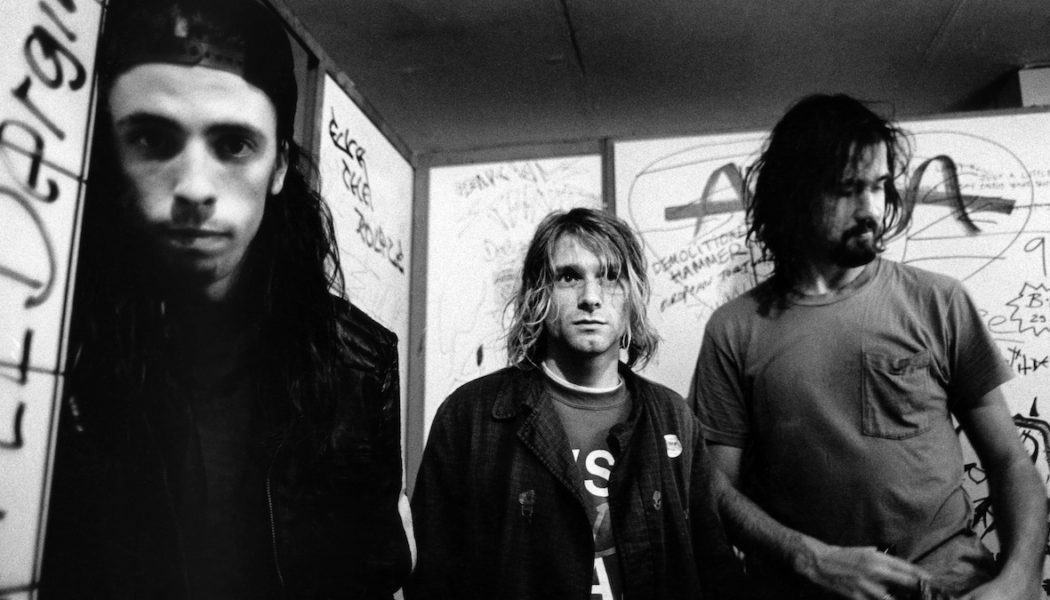


![After Backlash, slowthai Forced to Confirm “Destroy [Swastika]” Shirt Was Anti-Fascism](https://www.wazupnaija.com/wp-content/uploads/2022/08/after-backlash-slowthai-forced-to-confirm-destroy-swastika-shirt-was-anti-fascism-327x219.jpg)
